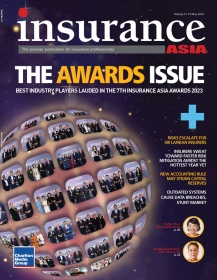Most Read
1. OCBC courts Great Eastern with S$1.4b offer 2. Manulife Singapore upgrades income-generating product 3. Pressures mount for less desirable energy insurance placements 4. Sun Life's Asia business reports $177m for Q1'24 net income 5. Sun Life unveils new ESG-focused critical illness planResource Center
Awards
Jul
09
Events
Jun
27
Event News
Event News
Proactive dialogue with regulators, embracing tech advancements are key to preemptive compliance – EY's Anita Sun-Young Bong
Co-Written / Partner
The EY Partner reiterated that though innovation carries inherent risks, balancing it with risk management through crisis simulation systems ensures sustainable progress.
Co-Written / Partner
Proactive dialogue with regulators, embracing tech advancements are key to preemptive compliance – EY's Anita Sun-Young Bong
The EY Partner reiterated that though innovation carries inherent risks, balancing it with risk management through crisis simulation systems ensures sustainable progress.
Videos
Partner Sites
Join the community
Most Read
1. OCBC courts Great Eastern with S$1.4b offer 2. Manulife Singapore upgrades income-generating product 3. Pressures mount for less desirable energy insurance placements 4. Sun Life's Asia business reports $177m for Q1'24 net income 5. Sun Life unveils new ESG-focused critical illness planAwards
Jul
09
Events
Jun
27

 Advertise
Advertise





















Commentary
Insurance innovation labs, a failed experiment
Insurance innovation labs, a failed experiment
Driving insurance transformation with strategy-aligned M&A
Can insurers deliver more value to customers?
Emergence of the InsurTech ecosystem in Asia
From hype to reality: Examining the industry's ‘transformation'
The future of insurance in a digital world
A six-step framework for strategic change
Insurance trends in Asia